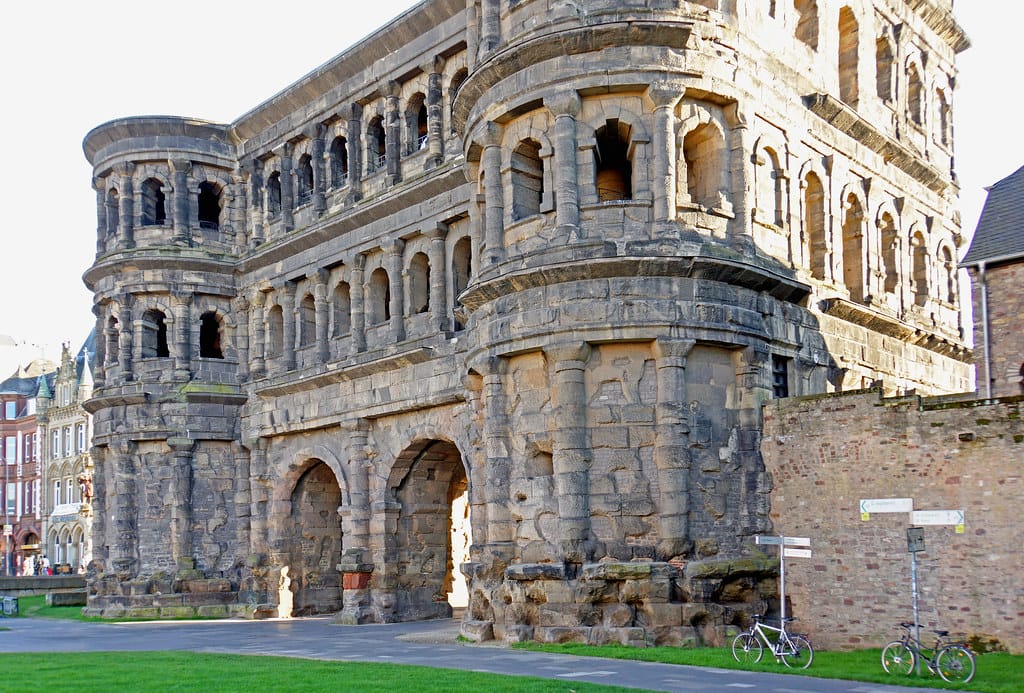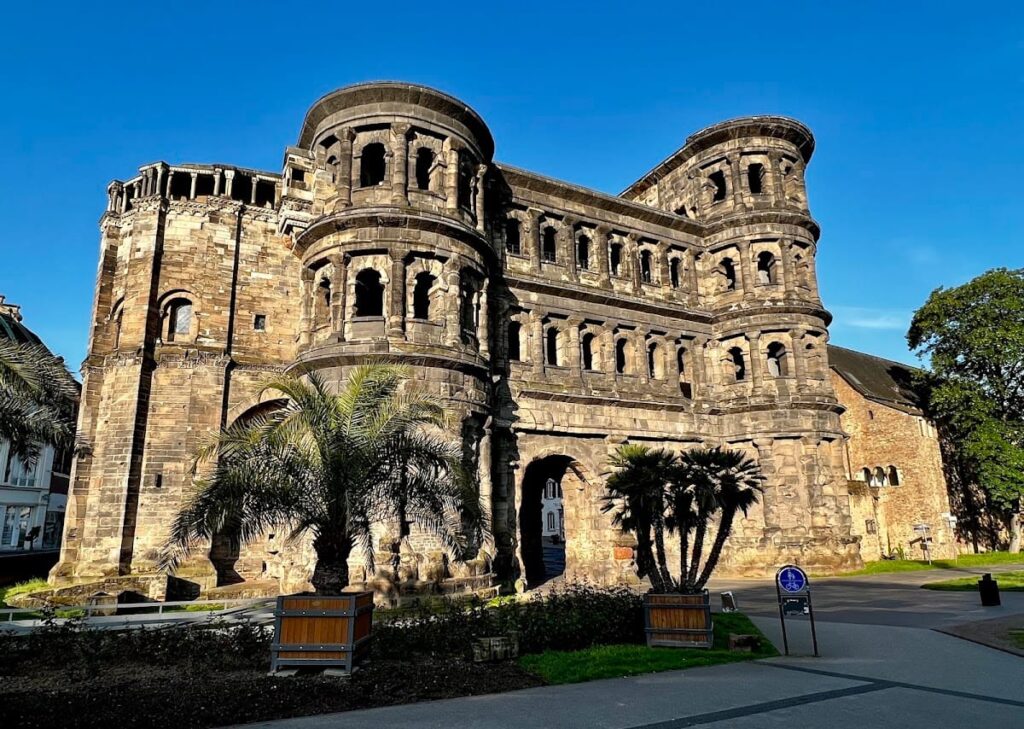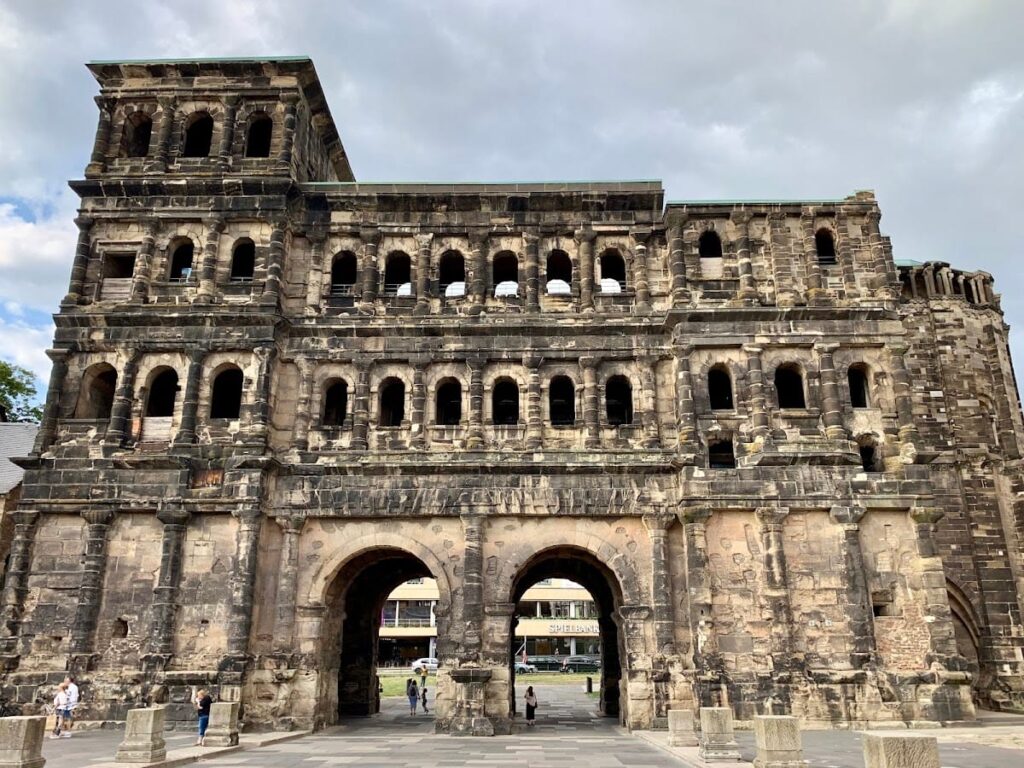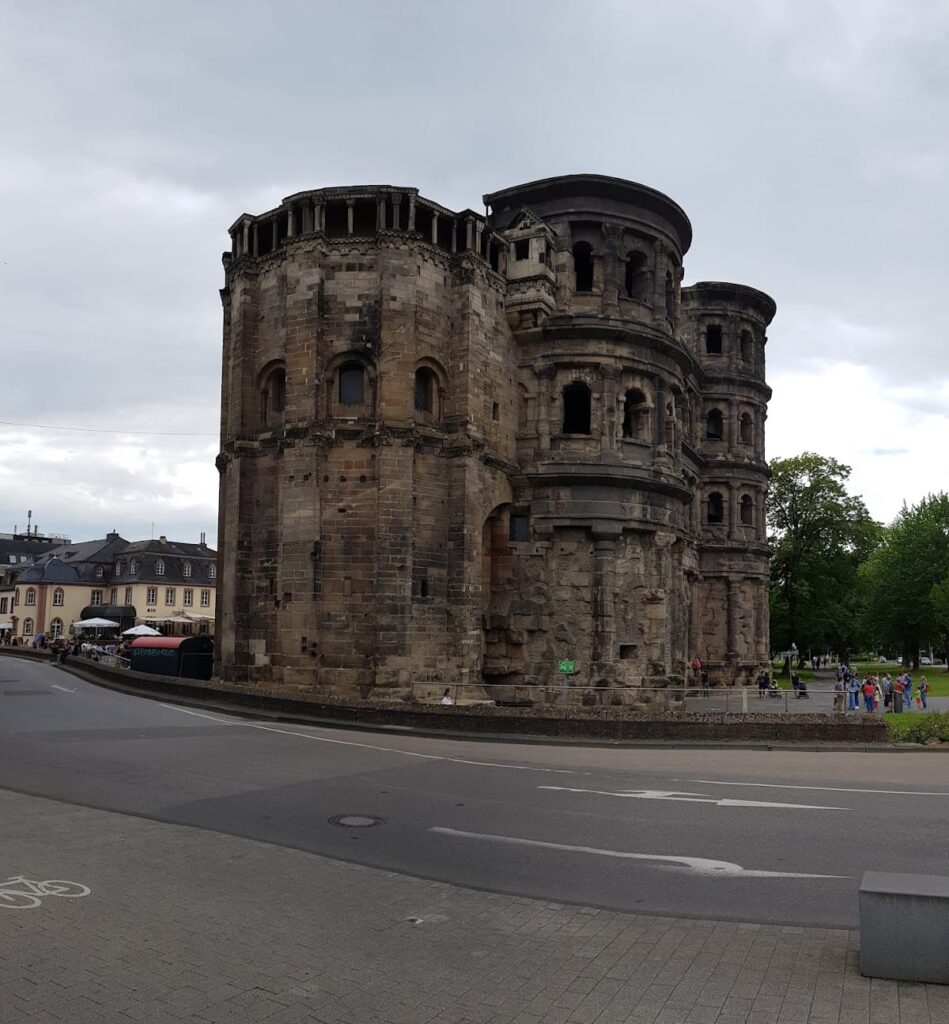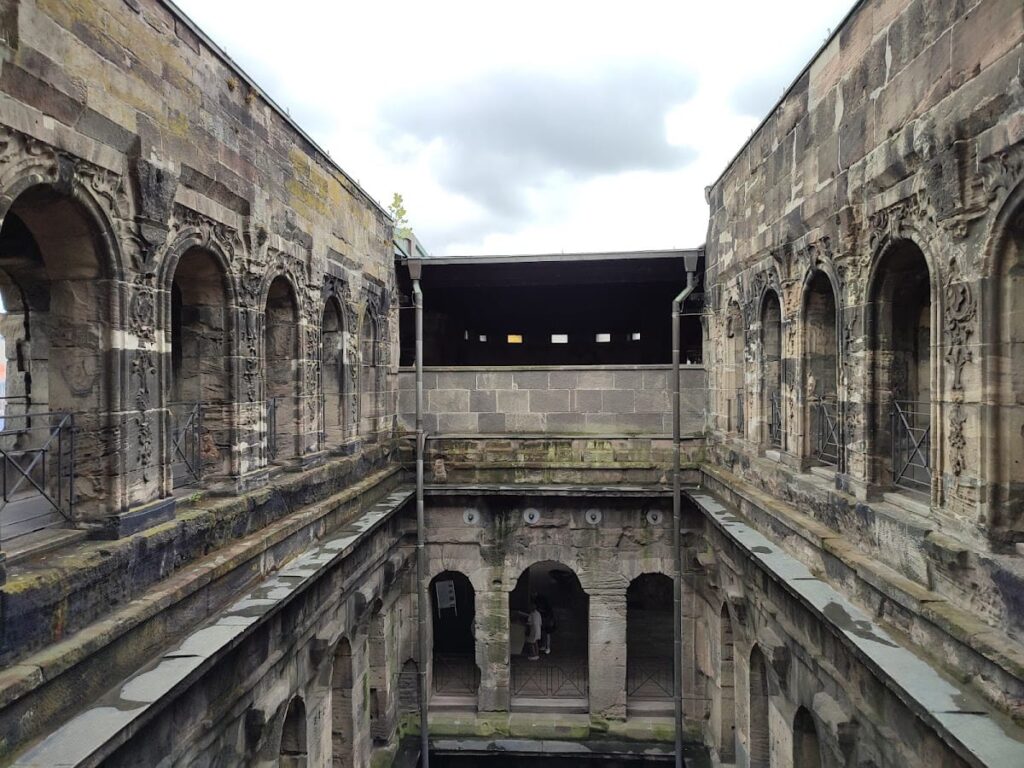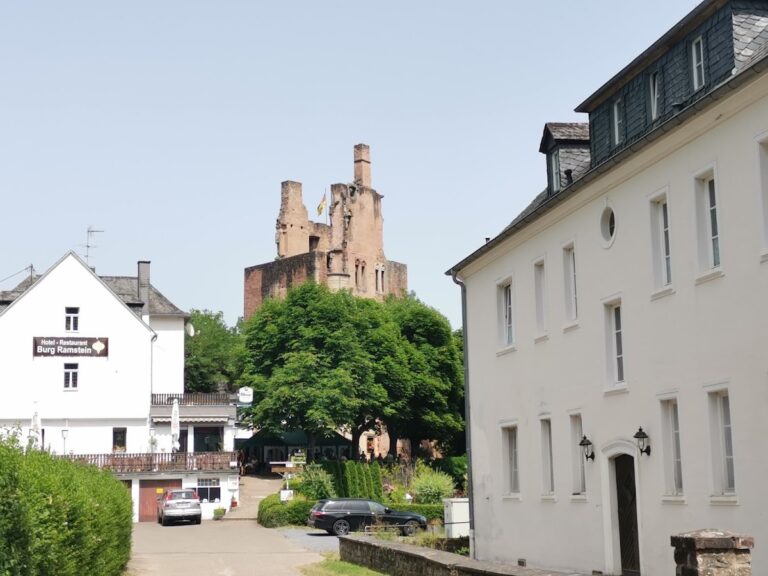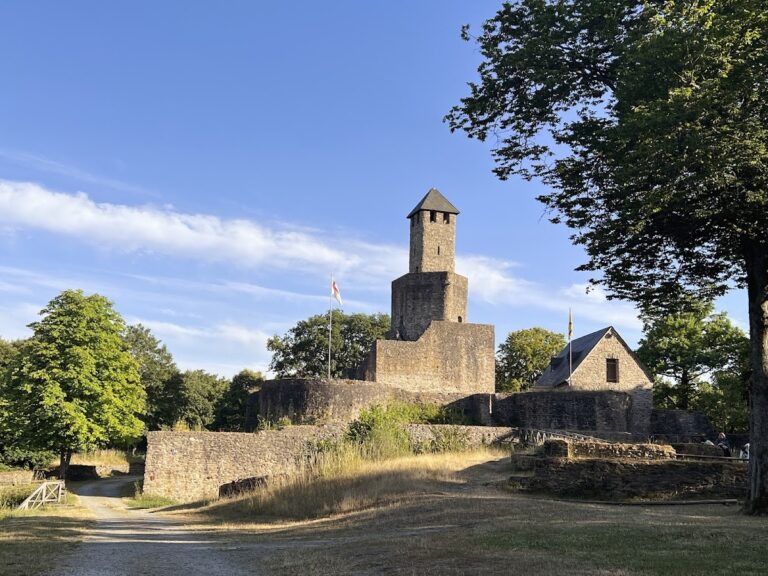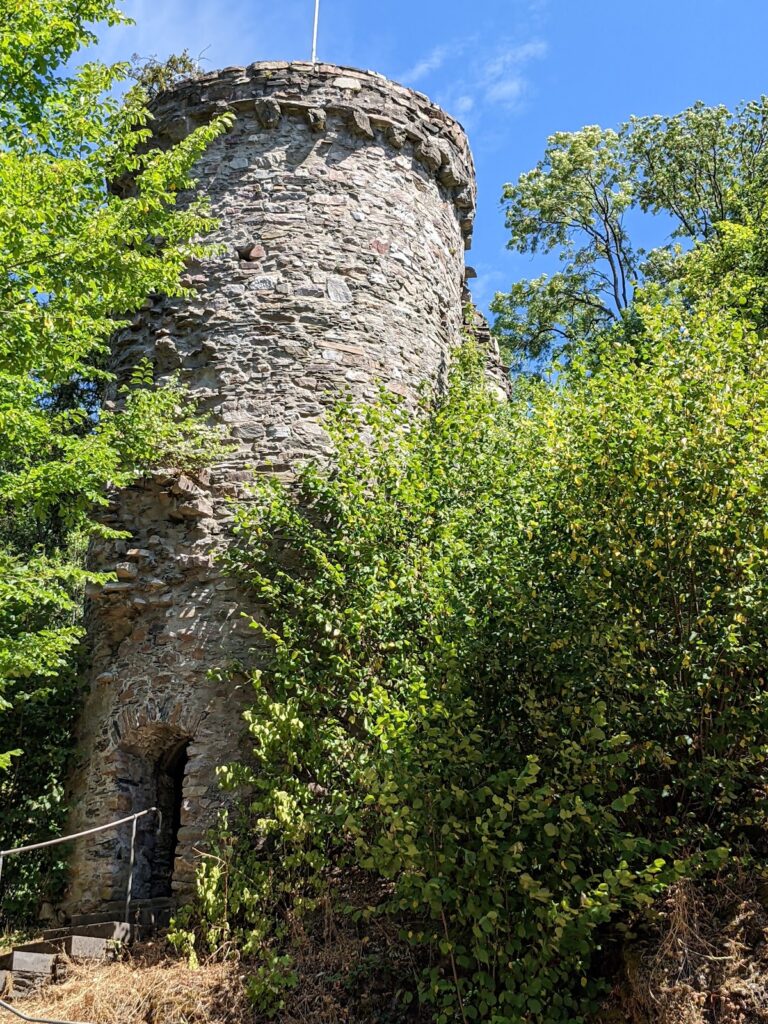Porta Nigra: The Roman City Gate of Trier, Germany
Visitor Information
Google Rating: 4.6
Popularity: Very High
Google Maps: View on Google Maps
Official Website: www.trier-info.de
Country: Germany
Civilization: Roman
Remains: Military
History
The Porta Nigra stands in Porta-Nigra-Platz, Trier, Germany, as a Roman city gate built around 170 AD. It served as the northern entrance to Augusta Treverorum, the Roman name for Trier. Construction began under Emperor Marcus Aurelius but was never fully finished, likely due to financial difficulties. The gate was one of four main entrances to the city, alongside Porta Alba to the east, Porta Media to the south, and Porta Inclyta near the Roman bridge.
During the Middle Ages, after 1028, the gate took on a religious role when the Byzantine monk Simeon lived as a hermit inside, reportedly walled in. Following his death in 1035 and later sainthood, the Porta Nigra was transformed into a double church with two chapels stacked vertically. This conversion led to the partial demolition of the eastern tower’s upper section. The church adaptation likely prevented the gate’s destruction and the removal of its stones for other buildings.
In medieval times, the original gate entrances were sealed, and access shifted to an external staircase leading to the first floor. The adjacent Simeon Gate replaced the Porta Nigra’s function as a city entrance and was protected by the Ramsdonk tower, built in 1389. In the 18th century, the Simeon Gate was redesigned by architect Balthasar Neumann, and Baroque decorations were added to the former church area of the Porta Nigra.
Napoleon dissolved the church and monastery in 1802. Between 1804 and 1809, the medieval church structures were removed, with Prussian authorities completing the demolition by 1817. This restoration returned the gate largely to its Roman form, except for the lower part of the medieval apse, which remains. The Porta Nigra reopened as a city gate in 1822, briefly named Wilhelmstor and later Römertor. Meanwhile, the Simeon Gate continued collecting tolls until its demolition in 1875–76, along with most city walls and gates.
The gate sustained minor damage during World War II. In 1986, it was designated a UNESCO World Heritage Site as part of Trier’s Roman monuments. Since 2005, it has been included in a Roman-themed guided experience. The name “Porta Nigra,” meaning “Black Gate,” originated in the Middle Ages, referring to the darkened color of the weathered sandstone. This name first appears in the 12th-century Gesta Treverorum, which also mentions the alternative medieval name Porta Martis.
Remains
The Porta Nigra is a large Roman city gate measuring about 36 meters long, 21.5 meters wide, and 29.3 meters high. It is the best-preserved Roman city gate in Germany. The gate was built from roughly 7,200 sandstone blocks quarried from Kordel, some weighing up to six tons. The stones show unfinished bossed stonework and half-columns on the facade, indicating the building was never fully completed.
Carved mason marks appear on many stones, including some inverted marks and daily work records without years. These inscriptions help date the construction to a period of about two to four years. Originally, the gate had two towers on the city side. The upper part of the eastern tower was removed during the medieval church conversion, which is the only major visible change to the Roman structure.
During the Middle Ages, the original gate entrances were filled in, and access was provided by an external staircase leading to the first floor. The medieval church conversion added two stacked chapels inside the gate, with an apse on the lower level and an organ loft in the upper church located in the western tower. Today, only the lower apse remains.
In the 18th century, Baroque reliefs and ornaments were carved into the sandstone in the former upper church area. These decorations are still visible. The Porta Nigra is protected as a cultural monument under the Hague Convention and forms part of the UNESCO World Heritage ensemble of Roman monuments in Trier.
